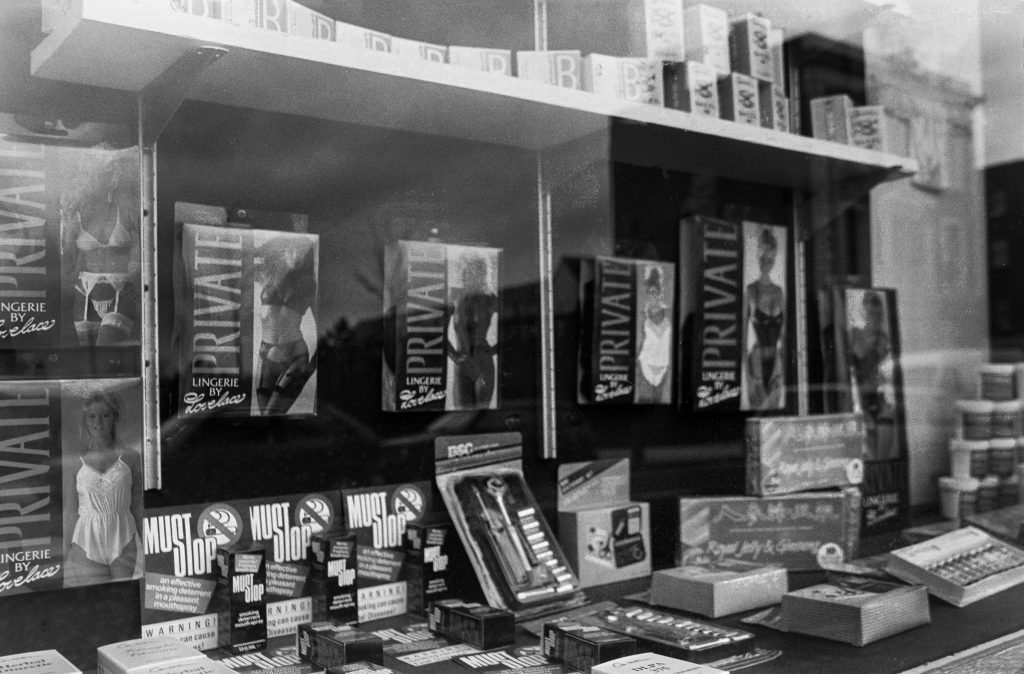Tollington to Holloway continues my walk on Sunday February 11th 1990 which began at Kings Cross with the post Kings Cross and Pentonville 1990. The previous post was More from Tollington Park – 1990.
This 3 storey detached house on Cornwallis Road, just a few yards down from Tollington Way, attracted my attention for its unusual decoration above what seemed a very ordinary door and window. According to Streets With a Story the street was developed in three periods as Shadwell Road, Esher Villas and Cornwallis Road in 1863, 1879 and 1885. This house probably dates from the latter part of that development but I’ve found nothing about it on-line
The Royal Northern Hospital was founded in York Rd (York Way) in 1856 at his own expense by a surgeon who had been sacked from University College Hospital for smacking a patient’s bottom. The hospital provided free services for North London’s Poor as well as treating railway workers. But the railway bought the house and they had to move, using several properties in the area. Finally it got is own home and the Great Northern Central Hospital opened on Holloway Road in 1888, changing its name to the Royal Northern Hospital in 1921 and expanding to Tollington Way in the 1930s. It merged with the Whittington Hospital in 1963. The facade of the main building has been retained on Holloway Rd and the building is the Northern Medical Centre
This picture was made from Tollington Way looking to the rather grand Italianate terraced villas on the opposite side of Holloway Road, Belgrave Terrace. They were locally listed in 1978. At left is The Cock Tavern at 596 Holloway Road. The pub was built in the 1880s and in the 2000s became a live music venue and bar, now Nambucca. Damaged by fire in December 2008 it reopened in 2010 and was refurbished in 2014 only to close in 2022 but unexpectedly reopen in 2024.
Holloway is one of the more densely populated areas of London with a very multicultural population including many Irish among its residents, and among them a significant number who supported the Irish struggle against the English occupiers in Northern Ireland. In 1990 we were in the middle of active attacks by the Provisional Irish Republican Army (IRA) on targets in London – the following year they attacked Downing Street using mortar shells and in 1992 a powerful bomb at the Baltic Exchange destroyed it and other buildings in the City of London, following this in 1993 with another bomb in Bishopsgate.
The street was named after the animal painter and sculptor Sir Edwin Landseer, best known now for the lions at the base of Nelson’s column. He became a ‘national treasure‘ and his death in 1873 gave rise to mourning across the nation and large crowds lined the streets as his funeral cortège made its way to St Paul’s Cathedral. Probably the street dates from around then.
The building is still there on Holloway Road, but sadly is no longer an Egg & Butter Merchant and has a new shopfront – and a bus shelter on the pavement in front of it.

As I made my way to the station at the end of my walk I could not resist this shop window with a rather strange mix of products including those listed and some rather strange health supplements. I only stopped long enough to take a picture and wasn’t tempted to buy anything.
My next walk a week later was also in North London and will be the subject of a later post.
Flickr – Facebook – My London Diary – Hull Photos – Lea Valley – Paris
London’s Industrial Heritage – London Photos
All photographs on this page are copyright © Peter Marshall.
Contact me to buy prints or licence to reproduce.



































































